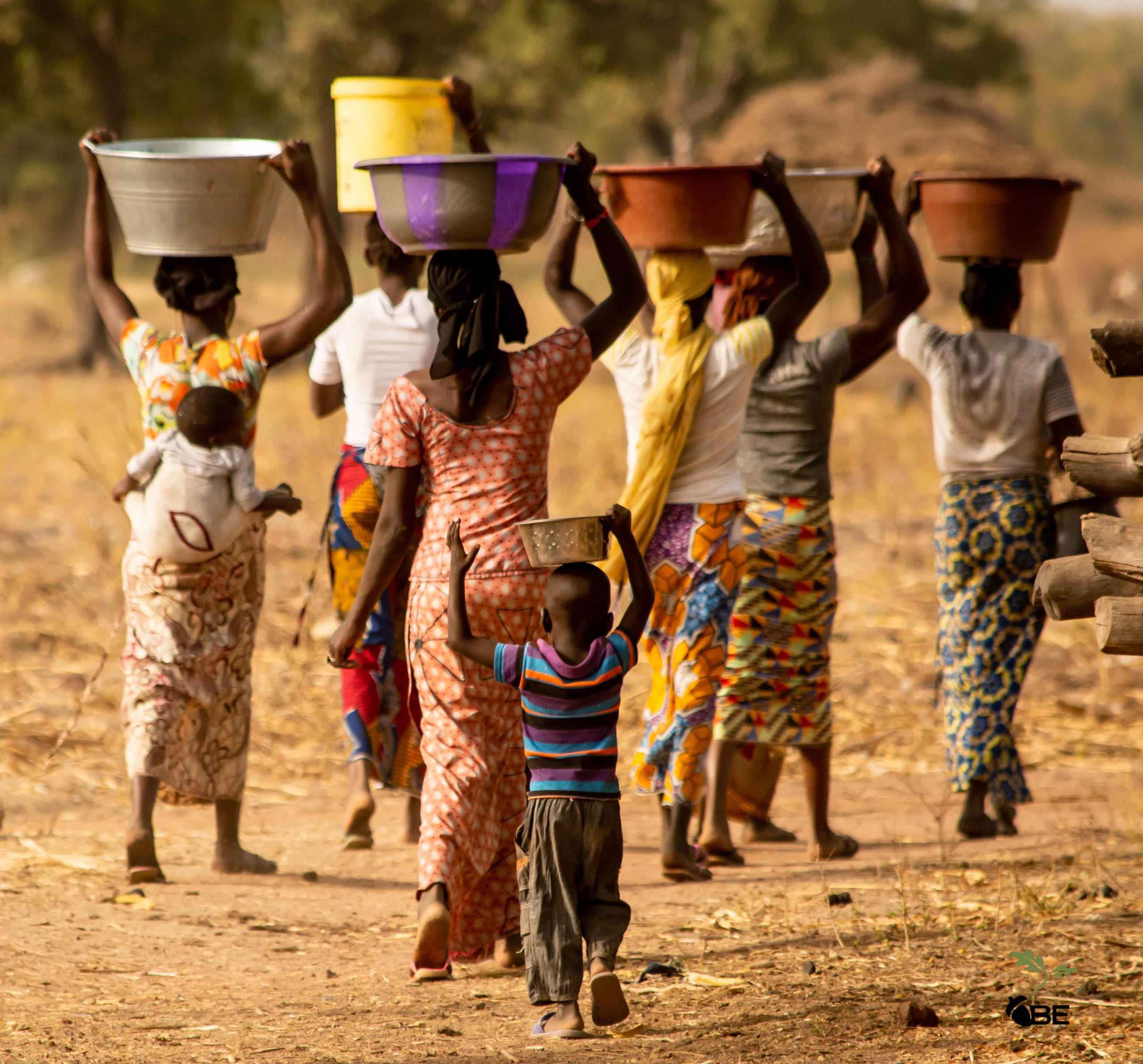
“Sticks in a bundle are unbreakable.”
~ Bondei proverb
“It takes a village to raise a child” is an African proverb we quote often. Not only the family into which an individual is born, but also the communities in which that individual involves herself or himself influence all aspects of mental, emotional, spiritual, social, and physical directions in life. Upon visiting Ouélessébougou and surrounding villages in the Koulikoro Region of south-western Mali, finally, I came to understand the significance of this proverb and its basis. In Mali, each child not only has a family, but he or she has the village to look after them and teach them life principles and skills.
“…the primary purpose of life is to awaken to the essence of who we are. Once we do so, we are invited to lovingly embrace this realization. The gift of community is that it offers each of us the fire of affirmation and support to achieve this. . .”
~ Alan O’Hare
The Malian people introduced me to five life-changing concepts of understanding why we need each other and how to live communally.
Lesson One: Care about One Another
Almost immediately, I noticed the stunningly beautiful and strong women. Physically, they are striking in their features, comportment, and presence. Yet, their genuine empathy and compassion enhanced their beauty and strength. Without hesitation, the women would assist one another. Nearly all of them had a baby tied to their backs and at least a toddler in tow as they attempted to do their daily work. One afternoon, I witnessed a woman struggling to move large cement-like blocks, and her baby started to cry. Before I realized what was transpiring, a lithe older woman took up the child onto her own back, swung the cloth over the top of both of them, and set about to tie it in the front. As if nothing had altered, she walked away with the baby contently snuggled, and the mother proceeded with her duties.


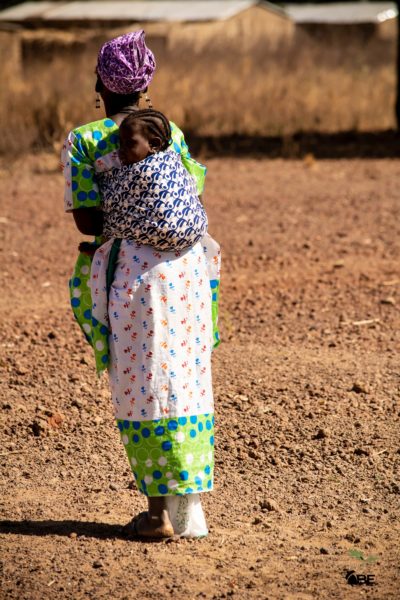
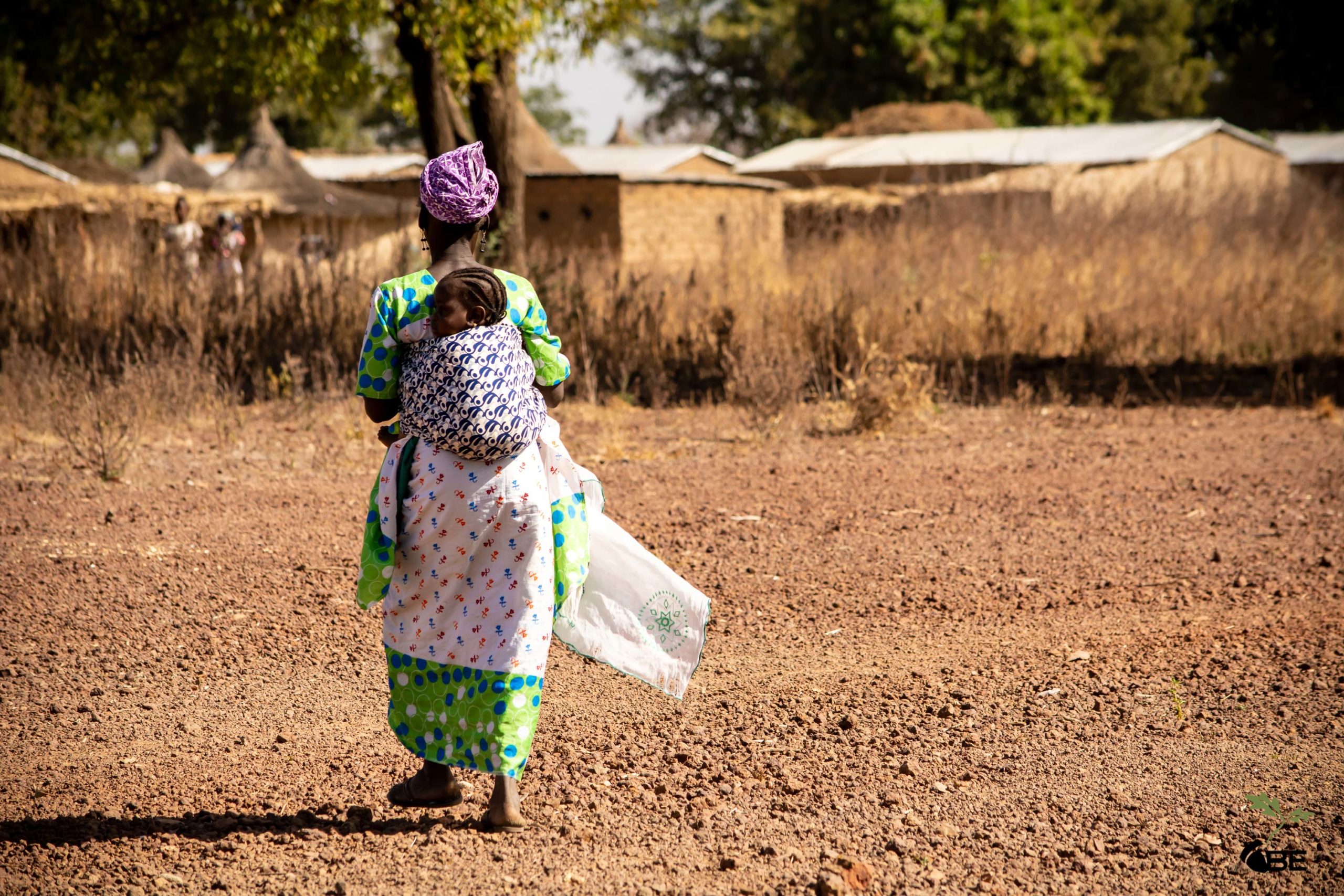 Whenever we arrived in a village, the health agent and many of the young men would bring chairs, benches, and stools to the shade of the central tree to make sure that we received a place to sit and feel comfortable. If there were a missing chair, one of the villagers would jump to their feet and encourage one of us to take the seat instead. Although we visited at a time of year considered to be cooler, it was still extremely warm at 95°F. As we wandered around Bamakoni Village, a woman doing her laundry lifted her head to greet us with a smile. Noticing that my friend appeared overly warm in the afternoon sun, the kindly woman fetched a chair, which she placed in the shade of her mudhouse, and motioned for my friend to sit down and rest. Quickly, the woman brought another chair to sit beside her to care for additional needs.
Whenever we arrived in a village, the health agent and many of the young men would bring chairs, benches, and stools to the shade of the central tree to make sure that we received a place to sit and feel comfortable. If there were a missing chair, one of the villagers would jump to their feet and encourage one of us to take the seat instead. Although we visited at a time of year considered to be cooler, it was still extremely warm at 95°F. As we wandered around Bamakoni Village, a woman doing her laundry lifted her head to greet us with a smile. Noticing that my friend appeared overly warm in the afternoon sun, the kindly woman fetched a chair, which she placed in the shade of her mudhouse, and motioned for my friend to sit down and rest. Quickly, the woman brought another chair to sit beside her to care for additional needs.
Visiting the small medical buildings erected in each village, I met the midwives and health matrons working for the wellbeing of their village and surrounding communities. I felt blessed to see the family and friends who would gather outside the curtained doors awaiting a birth or results of a procedure. Anxiously, they would enter the recovery rooms and surround the individuals to lend their support and love. Energetically, one grandmother proudly introduced me to her daughter, who had just given birth to beautiful twin girls. As I cooed at the newborn babies, another mother touched my shoulder, motioning for me to visit her teenage daughter about to deliver, explaining through gestures that this was her first grandchild. Moments later, another sweet woman took my hand and led me to the bed of her gentle daughter with a tear-stained face. She had just lost her baby during delivery. Gripping my hand tightly, she conveyed her sense of loss and invited me to mourn with them. In less than 10 minutes, I had experienced the spectrum of genuine emotions from joy to sorrow for individuals whose acquaintances I had barely made. Yet, I felt drawn into the protected environment of empathetic and nurturing mothers, grandmothers, and village aunties, and I didn’t wish to leave it.
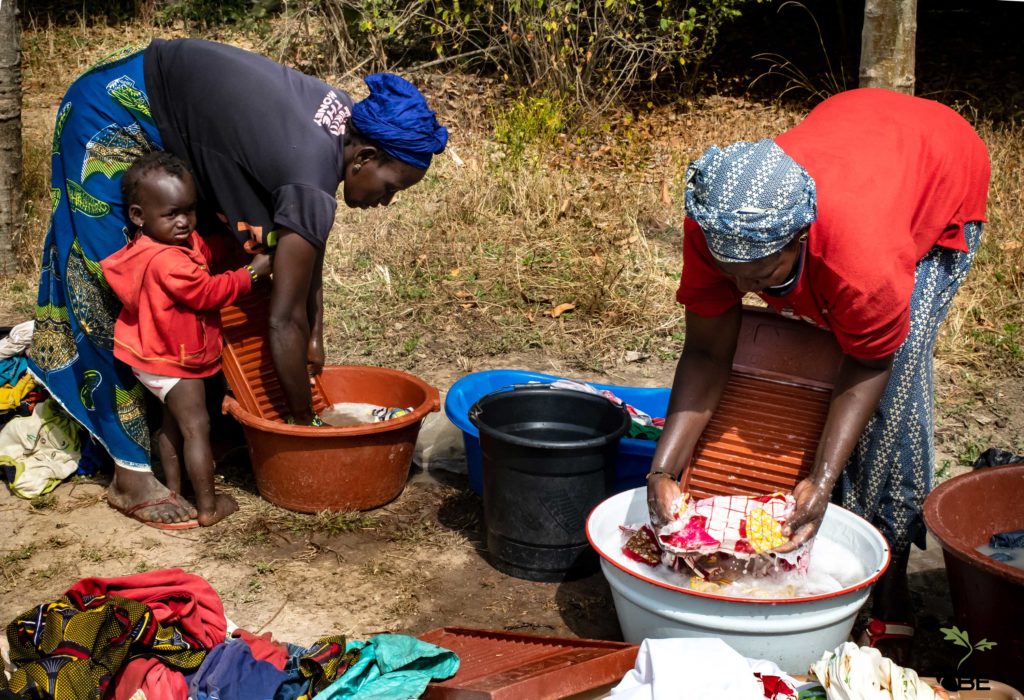
The villagers embrace sharing what they have and providing for everyone in some way. With the recent fighting in Northern Mali, many families from these other regions have lost their homes and possessions, finding themselves displaced from what they have known all of their lives. Those individuals who have been fortunate enough to migrate southward have found refuge in the scattered Koulikoro Region villages. With the influx of IDPs*, we witnessed how the chiefs and villagers offered the best to these individuals and families that they could afford to give. They have built mudhouses, opened their food granaries, and accepted them socially into their daily activities and work. In Solo, the villages could not provide the needed mudhouses; however, willingly, they constructed makeshift structures covered with black plastic sheeting until they can make enough mud bricks to build permanent homes for the IDPs.
Lesson Two: Work Together
Malians know the rigors and rewards of hard work. Each day’s food, security, and physical wellbeing are contingent upon the labors performed and accomplished from sunrise to sunset. However, I realized that I hardly saw a man or woman working alone without another individual in proximity doing the same task or at least providing the encouragement and assistance in some other way. Even the children joined in rustling up the cows, weeding the gardens, and carrying for their brother’s or sister’s needs for their mothers and fathers to accomplish their daily work.
When we arrived in any of the villages, the women were usually in the process of sorting shea nuts for sun drying or crushing and placing them in their shells in pits and atop mud towers with the fire kindled at their bases. Some women worked large mallet sticks, ramming them in turn with a precise synchronization into deep wooden vessels to crush and pulverize the roasted nutmeat or millet. Others, their torsos bent perfectly in half, used their powerful arms in a cycling motion to mill and churn the extracted oils with water in vats full of the dark brown mud. Still, more women transported the finished containers on their heads to prepared fires to cook out the water and the impurities. Within minutes, they invited us to join in the work, with much laughter at how unskilled we were at doing their tasks. Witnessing between the various villages this process from beginning to end, we realized the importance of why the women work so hard to create this life-sustaining butter. In a season when the wells run dry and the land lays barren of food sources, the shea trees, that live for 200 to 300 years, bloom and provide needed nutrition and sustainable income for the villages. They work together to create what they call green gold for cooking and for selling at the markets (and to the Europeans and Americans who love this product). In return, for their collective hard work as a community, the villages may thrive.

In Bamakoni, as we wandered around the different family compounds and fields, my daughter disappeared into one of the compounds with a woman excited to have her as a visitor. By the time I found her, the woman and her family had taught my daughter how to tie on a baby, make shea butter, and cook dinner over the fire. As our group needed to depart, the sweet woman gave her a pile of yams as a generous and gracious parting gift.
Furthermore, I appreciate that money has not divided them as a community or as a people. The villagers work hard for what they earn, but it seems to me that they do not differentiate each other based on personal amounts of money. We brought some donated soccer balls to one of the villages for the children. At once, the health matron responded by calling sharply to the young men at play. I was impressed that they stopped their activity without complaint, brought her the ball, and placed it in her hands rather willingly, considering their previous excitement. At her request, they sat down around her as she explained to them that this ball was very new and shiny and that to own such a beautiful object, they would each have had to work very hard to earn enough money to purchase it. So, she told them to combine their efforts to each raise the equivalent of 20 cents. In one month, when they had earned this amount and brought it to her, she would return the ball to them. Endearingly, she explained that if they worked together to acquire this prize, they would appreciate the gift with greater gratitude and with remembrance to care for it.
Lesson Three: Celebrate Together
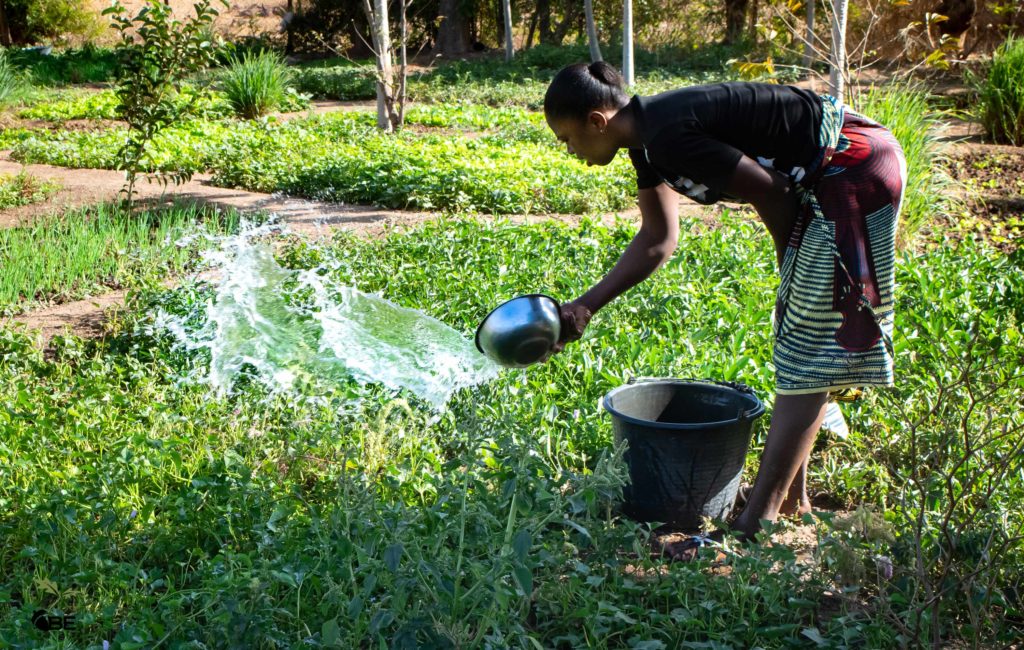
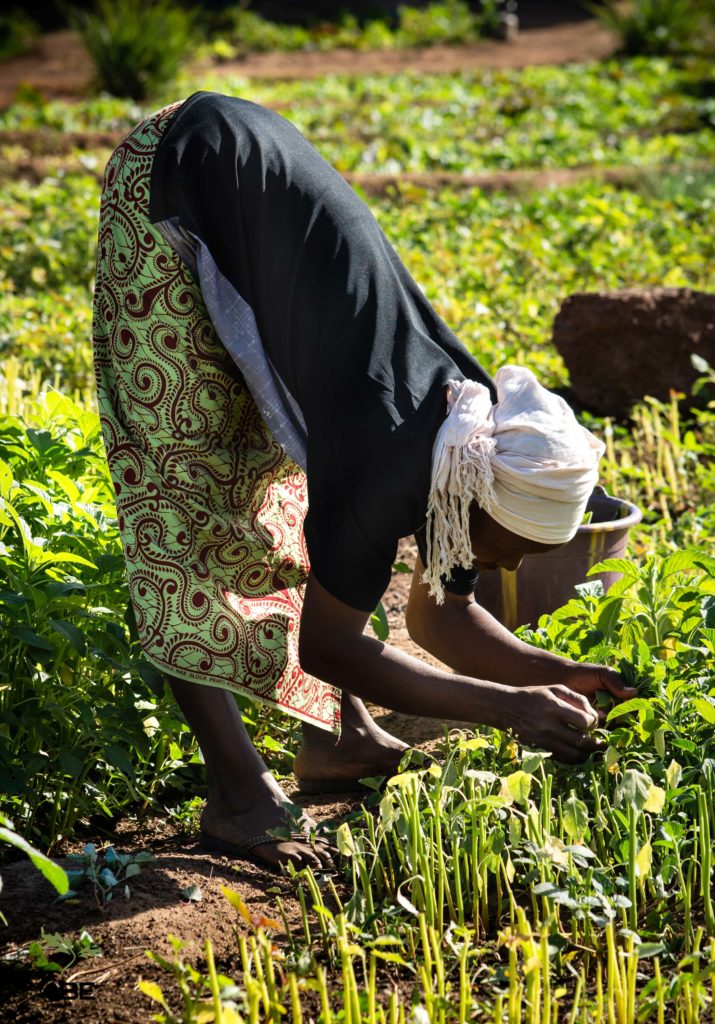
As an American visitor, I found that having to dump a bucket of cold water over my head to shower created a minor inconvenience from my regular hot-water showers at leisure at home. Yet, many of the villagers have never visited the equivalent of a department or grocery store to purchase food and other commodities. They don’t have Amazon Prime that may ship them a package to their mudhouse in their village on the Savanah in 2 days. Instead, they have wonderful, fresh-food markets that sell seasonal produce. Moreover, the produce comes from the local gardens, mainly the women’s gardens, that flourish as an oasis in the dusty region. Each tomato, haricot vert, onion, papaya, yam, orange, pepper, and more grow under the watchful care of the female gardeners who come daily to draw the water from the wells, usually by hand, and throw them across the arid ground, over and over and over. The women’s gardens are places of daily celebration and gratitude for each thriving plant and fruit tree, which promises both sustainable nutrition and income. After attending mosque on their holy day, Friday markets are like a carnival, offering unique, extra delights such as fried street food, herbal medicines, and hand-crafted items out of wood, clay, and fabric. I witnessed the weekend markets of Sélingué and Ouélessébougou bring people from the individual villages together not only to sell but to celebrate their bounty, to trade, and to converse with one another. They present themselves with their elegant, colorful apparel. Their greetings to one another are genuine and affectionate in their care and concern.  In every market, palpable energy of sound, color, smells, and visuals abounds. Barely enough space to squeeze past an oncoming passerby in the corridor between the array of provisional stalls only adds to the market-day celebration.
In every market, palpable energy of sound, color, smells, and visuals abounds. Barely enough space to squeeze past an oncoming passerby in the corridor between the array of provisional stalls only adds to the market-day celebration.
A few days before and after the new year, Ouélessébougou came alive with nightly drumming and singing, bringing vivacity to the little city. Yet, after the holiday had passed, we learned that no one required a formal occasion to clap, to sing, to dance, or simply to celebrate life. Even the children would gather various plastic, metal, and wooden objects to drum and dance in their little celebrations. If needed, clapping provided the necessary rhythm and music for their dancing and laughter. In Samakoroni, the little boys were so excited we had arrived to visit that they put on music and began to teach us how to move with fancy footwork. More often than not, the older women would join in the dancing and clapping, bridging the generations in a simple moment.
In the village of Bassa, the villagers and the Ouélessébougou Alliance (called the Utah Alliance in Ouélessébougou), assisted by other NGOs and generous donors, worked together to raise funds and to secure and prepare the land for a school garden and a solar-powered well. The Bassa villagers, old and young, expressed such gratitude for everything they had received and worked toward that they invited us to come and celebrate with song and dance. Everyone dressed in their beautiful robes. Before the celebration commenced, we met with the chief and his brother, who welcomed us with gifts of live chickens and kola nuts. In long-standing West African tradition, chiefs give kola nuts as honorable blessings and to express trust, respect, and gratitude to the recipients. He led us to the gathering location where they made a formal presentation followed by a visit to the garden and to demonstrate the flowing water from the prized well. As the lifespring gushed, the children danced in the mud puddles and under the streaming water. At the conclusion of the presentation, the adults and youth alike joined with joy and rejoicing in singing, drumming, and dancing.


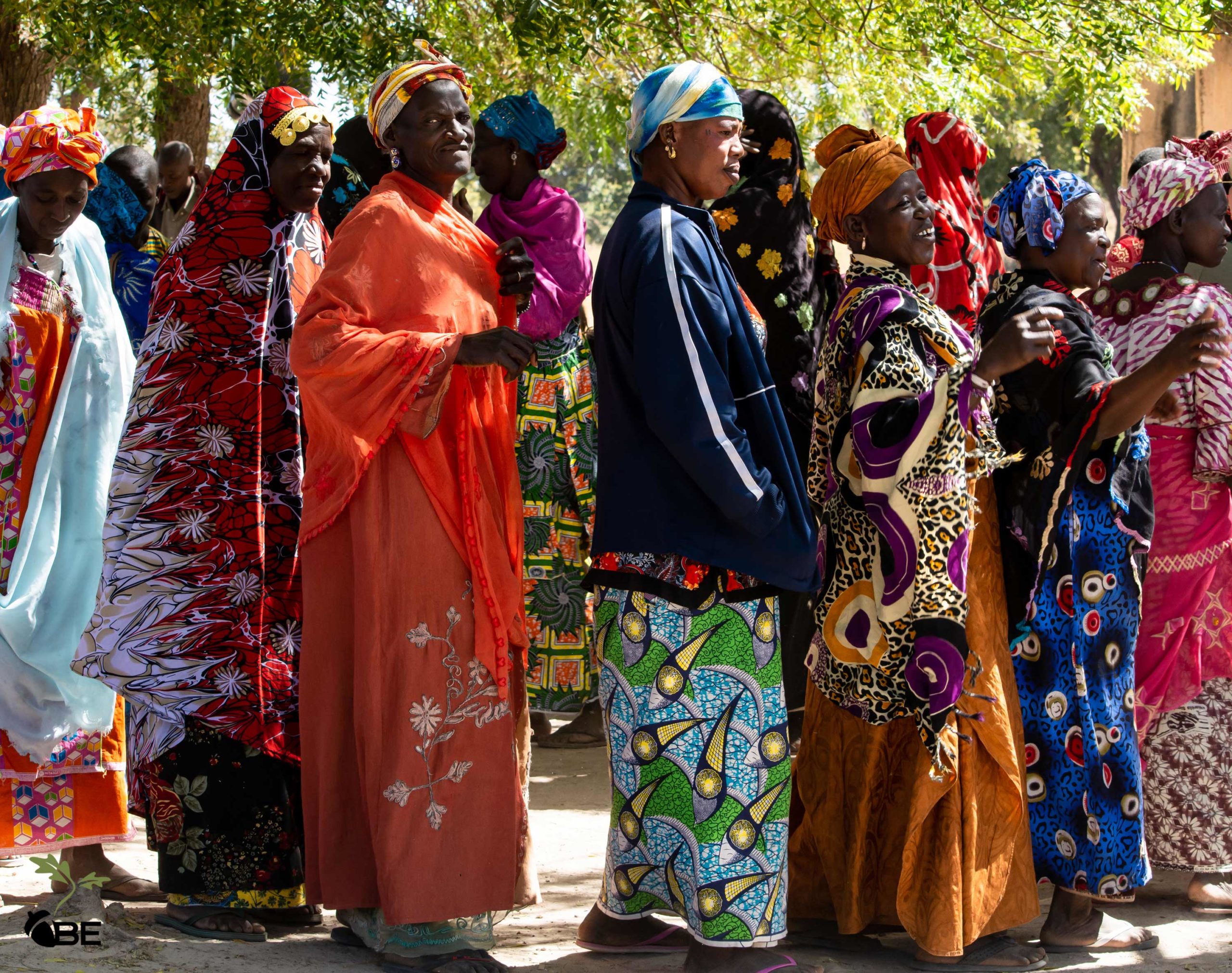
Lesson Four: Eat Together
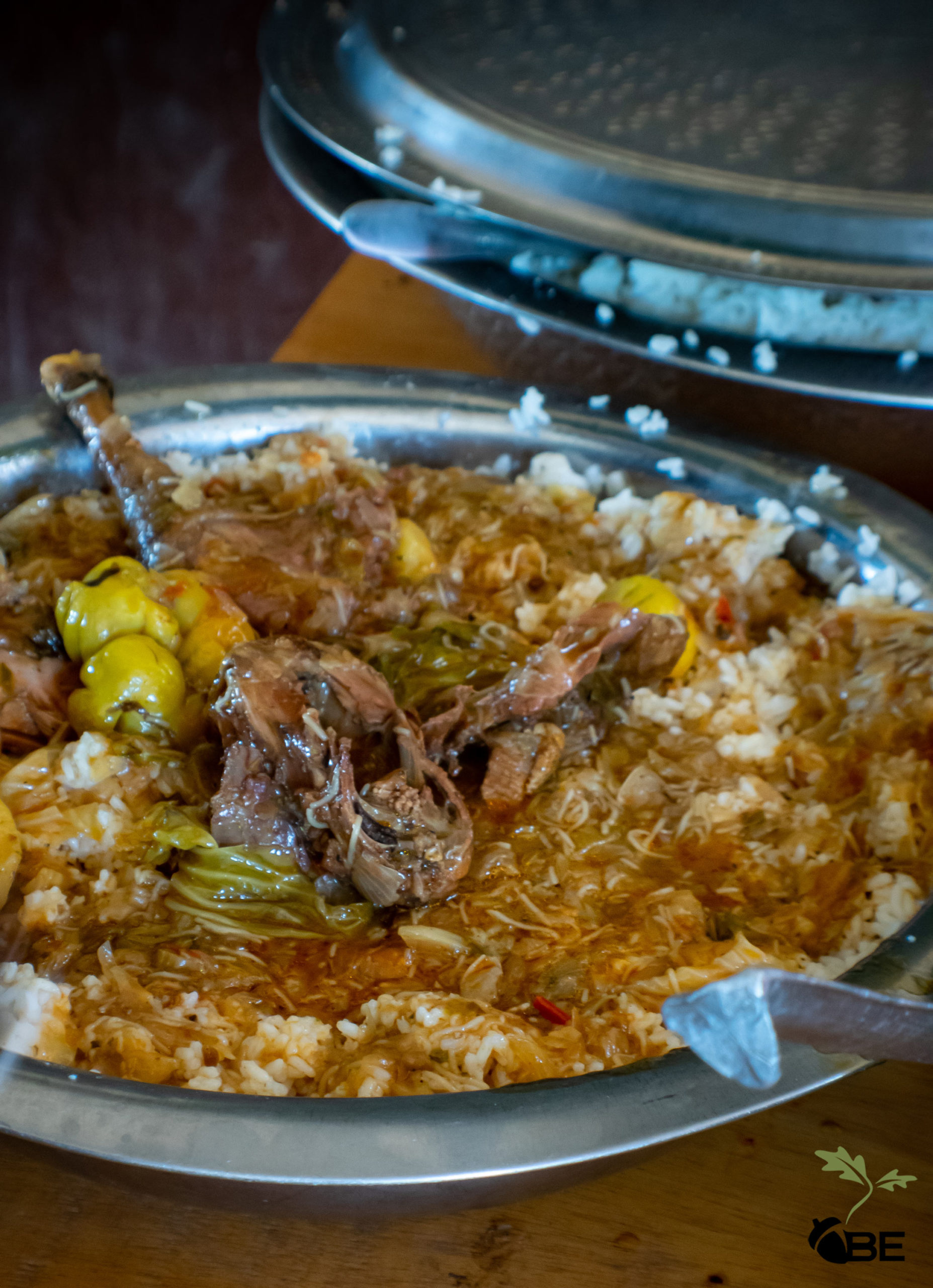
Malians have taught me that family and the village are their community. They play together. They work together. They eat together. Eating together creates a community of being together.
During my stay in southwestern Mali, one tradition that I found fascinating was the fact that they eat together…from the same large bowl. Typically, from Mandé tradition, on a table or the ground, the Malians place a large flat-bottom bowl of rice or millet, topped with peanut sauce, chicken for special occasions, and vegetables. Everyone gathers on stools or squatting around the bowl to partake of the food with their right “rice” hand, or, in Bamanakan, kinibolo. This manner of eating invites conversation and laughter and a closeness unparalleled. In festive situations and extended gatherings, if everyone eating cannot fit around the bowl, the cooks prepare another bowl to ensure that everyone receives nourishment and interaction. In the most simple situations, I found families and children gathered to eat their bread and millet porridge from the same bowl.
One evening, our Malian friend made us a traditional meal of peanut sauce over rice, onion sauce over hand-cut French fries, and steamed green beans. However, we didn’t sit aimlessly around the compound. Instead, we pushed two large tables together and provided enough seating that everyone was able to sit together, see one another, and interact.
“A united family eats from the same plate.”
~ Baganda proverb
I loved to see how eating together in the Malian manner brings people together. Before the recent push for sanitation, villagers believed that it was important for a family to wash their hands together in the same bowl to be clean. They feared that those who did not participate in this simple ritual would be the ones who would lose their connection to family.
Lesson Five: Include Everyone
Everyone loves a little recognition that they exist. Everyone needs a small degree of validation of their worth. Everyone yearns for a degree of acceptance into the lives of others.
In Mali, I felt equally recognized, validated, and accepted.
Whenever I entered any village, the people stopped what they are doing to either wave from afar or promptly approach to take my hand in the unique handshake action that signifies welcome and appreciation with “Iniché” uttered gleefully. In one beautiful word, Iniché, one welcomes you, accepts you, and thanks you. But it does not end there. In Mali, greeting each person involves a dialogue of inquiries of “Good day. I hope you are doing well. I hope your family is well. I hope your mother is well. I hope your father is well.” and so on in gracious politeness and with sincerity in every statement and question.


Each morning outside the compound in Ouélessébougou, the children would stand on the wall surrounding the soccer field and cry out our names, begging us to come out and play with them. Unfortunately, the school system was on strike, so several dozen children would gather in hopes of finding one us available for interaction. The minute we would exit the gate of the compound, they surrounded us, not begging for money but begging for us to see them, to value them. On one Friday afternoon, our group started the journey to the Ouélessébougou market, a mass of children surrounded us, all of them wanting to hold our hands, sometimes 2 or 3 of them vying for one of my hands. If we bought anything at the stalls, quickly, they would take it and carry it for us as a gesture of friendship. To express our gratitude for them, we bought them bananas…yes, simple bananas from one of the ladies carrying the trays of bananas on her head. At that moment, bananas had more value than gold. They not only ate the banana but wanted to get every last taste of it on the inside of the peeling.
In the villages, it was no different. The children flocked to surround us. We sang songs together and played active games. I watched as the children included a girl with cerebral palsy in their games, utterly oblivious to any physical differences. She laughed as her good hand shook the parachute, throwing the ball high into the air.

Everyone laughed.
Everyone played.
Everyone was included.
One of the sweetest inclusion moments for me came when I received my Malian name in N’Korobougou. The first name represented something about me. The last name was an invitation to be part of a family and a community. From then on, whenever I would introduce my Malian name to the villagers, they would rejoice, clap their hands together, and smile so big with recognition of our immediate connection, as if to say, “You are one of us.” One dear woman pointed at herself, stating, “Seta Daumier.” I pointed at myself and introduced my new name: “Fanta Samake.” Again, Seta pointed at herself and said, “Seta,” then to me “Fanta,” and proceeded to explain something to me in Bamanakan. I didn’t understand. However, her young granddaughter explained to me in French what her grandmother had expressed. Seta told me that we are sisters and that I must return to them in the village as soon as possible because this is my home.
I felt it. This is my home.
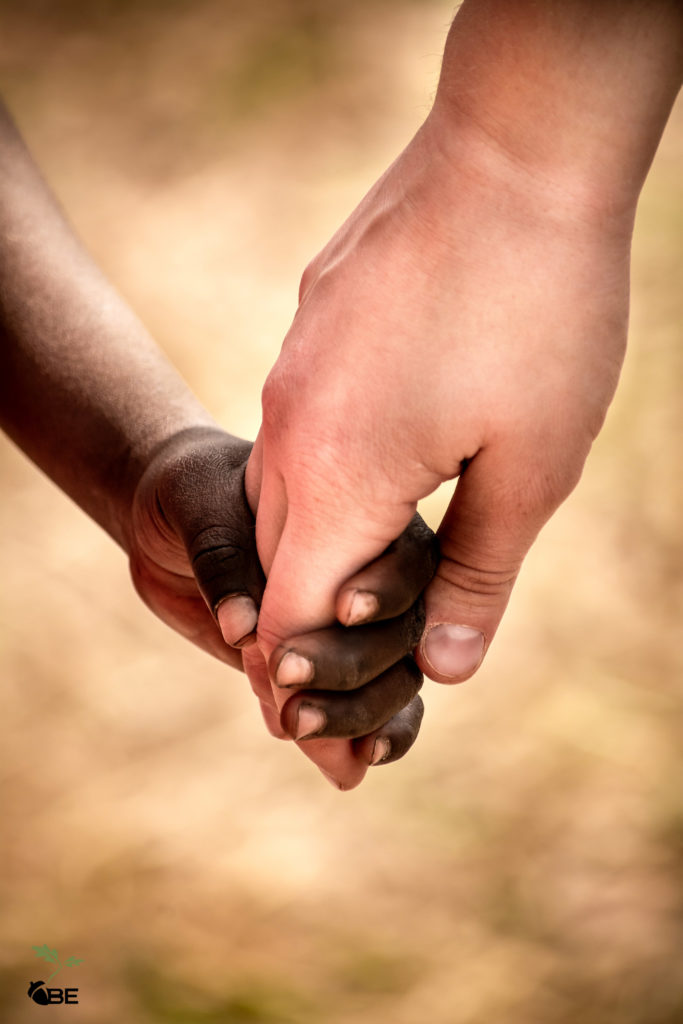
In every grasp of the hand, in every smile, in every laugh in multiple languages, in every invitation to sit and to work and to eat, in every kind gesture, in every child wanting to take my hand, in every touch on my arm…
This is my home. I have a name. I belong to a community in a little part of the world.
by Robyn J. Mock
with original photography by Robyn J. Mock & Brontë E. Mock

©Be the Beautiful Life All Rights Reserved
*The IDMC defines IDPs as “persons or groups of person who have been forced or obliged to flee or leave their homes or places of habitual residence in particular as a result of or in order to avoid the effects of armed conflict, situations of generalized violence, violations of human rights or natural or human-made disasters, and who have not crossed an internationally recognized State border.” To clarify, unlike an IDP, a refugee has a choice to cross or not to cross the border when forced from their homes.
Source: Guiding Principles on Internal Displacement, 1998.

